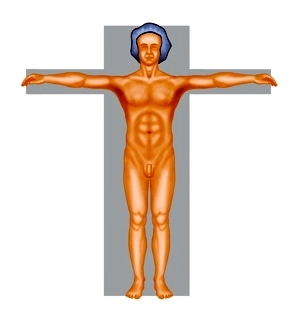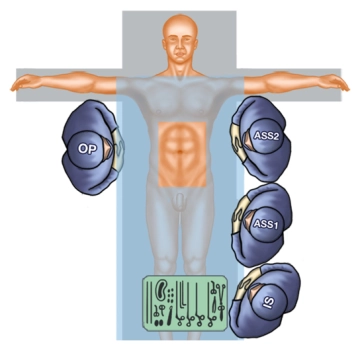In liver surgery, resections are indicated for a broad range of diseases. The list is headed by malignant liver lesions, followed by benign tumors, some non-tumorous benign diseases, and living-donor liver transplantation.
Common indications for liver resection
1. Malignancies
1.1 Primary
- Hepatocellular carcinoma (HCC)
- Cholangiocellular carcinoma (CCC)
- Cystadenocarcinoma
1.2 Metastases
- Colorectal cancer
- Non-colorectal non-endocrine malignancies
- Endocrine malignancies
1.3 Direct tumor invasion
- Gallbladder cancer
- Colon cancer
- Hilar cholangiocarcinoma
- Gastric cancer
- Kidney cancer
- Adrenal cancer
- Retroperitoneal / Vena cava sarcoma
2. Benign disorders
2.1 Liver tumors
- Adenoma
- Focal nodular hyperplasia
- Hemangioma
- Cystadenoma
2.2 Non-tumorous conditions
- Liver cysts/polycystic liver degeneration (with rapid progression and clinical symptoms such as sensation of pressure, pain, dyspnea, and infection)
- Parasitic liver cysts (echinococcosis)
- Intrahepatic calculi
- Caroli disease
- Recurrent liver abscess
- Liver trauma
- Living-donor liver transplantation
The indication for liver resection must consider functional aspects as well as surgical technique, and in case of malignancy also oncological considerations.
Oncological aspects
The goal in surgical treatment of hepatic malignancies is R0 resection, i.e., complete gross and microscopic tumor resection. The only case for R2 resection is in symptomatic neuroendocrine liver metastasis because debulking of more than 90% of tumor mass will provide the patient with symptomatic relief (cytoreductive surgery).
Functional aspects
Liver failure following hepatic resection is the most important factor in perioperative mortality. Therefore, risk assessment is of vital importance because treatment options in postoperative liver failure are rather limited. The presence of postoperative liver failure correlates with:
- Volume and quality of the liver remnant (cirrhosis, fatty liver, fibrosis)
- Presence of cholestasis and cholangitis
- Extent of surgical trauma (size of resection area, blood loss, duration of any hilar occlusion)
- Postoperative complications (bile leakage, infections etc.)
In the absence of hepatic damage and if the liver exhibits normal synthesis and excretion, the rule of thumb in resection is to leave at least 25%-30% of the functional parenchymal volume of the liver. However, this assumes that the arterial and portovenous blood supply is sound and the hepatovenous and biliary drainage of the liver remnant will be unhampered. While routine lab parameters (bilirubin, albumin, cholinesterase, and coagulation) provide a guesstimate of liver synthesis and excretion, they are less important when assessing the functional hepatic reserve after extensive resection.
Thus, assessing the functional hepatic reserve of a cirrhotic liver becomes much harder. Apart from the general physical condition and the Child-Pugh score the severity of any portal hypertension present is of vital importance.The parameters most indicative of adequate postoperative liver function are normal bilirubin levels and a pressure gradient in the hepatic veins of <10mmHg. Indicators of the degree of portal hypertension include: Size of spleen, presence of esophageal varices and platelet level (beware: < 100,000/μL). Therefore, cirrhotic livers only tolerate limited resections (wedge resection, mono-/bisegmental resection). Only selected Child A patients without portal hypertension will become possible candidates for hemihepatectomy. Stage Child C cirrhosis of the liver is one of the contraindications for liver resection. Aspects of surgical technique
Because of functional and technical aspects in appropriate indications, liver resection should always be considered if the remnant comprises at least two sufficiently large liver segments with adequate vascular and biliary supply/drainage.
Surgical treatment of benign liver tumors requires a high degree of critical indication resulting from (in decreasing frequency):
- Diagnostic uncertainty despite extensive diagnostics
- Clinical symptoms, e.g., upper quadrant pain, nausea or cholestasis due to tumor size, compression symptoms, and significant increase in size
- Risk of rupture and bleeding in adenomas > 5cm
- Risk of malignant transformation


